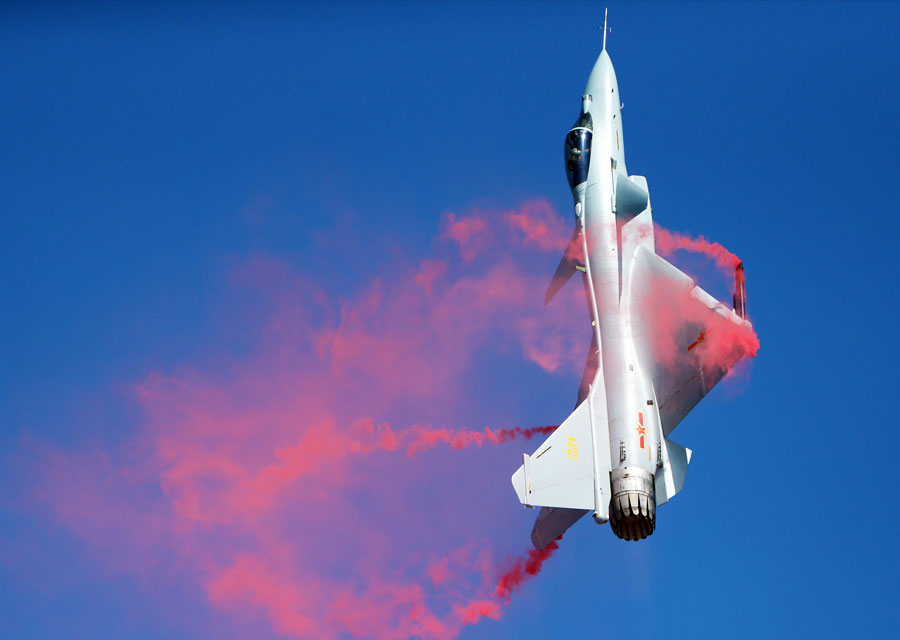Engine technology puts China in global top flight

A People's Liberation Army Air Force J-10B fighter performs 'Pugachev's Cobra', a high-agility maneuver at the 12th China International Aviation and Aerospace Exhibition in Zhuhai, Guangdong province. [Photo by ZHOU GUOQIANG/FOR CHINA DAILY]
Development of thrust vector control provides improved combat capability. Zhao Lei reports.
China has mastered a field of cutting-edge aviation technology that is currently dominated by the United States and Russia, which is expected to give the nation's fighter jets better combat capability.
The technology, known as thrust vector control, involves a movable thrust nozzle that enables a fixed-wing plane to change the direction of its engine exhaust. This allows the pilot to raise the aircraft's nose cone vertically while maintaining forward momentum so the plane effectively "sits" on its own tail in an aerodynamic stall caused by low speed and a high angle of attack.
The use of such technology extensively boosts the maneuverability of a fighter jet, providing advantages in aerial combat, especially during close-range dogfights.
The idea of thrust vectoring is not new to the global aviation industry, as it has been used for nearly 100 years; first as a control mechanism for airships, and later applied to the design of fixed-wing combat planes on a small, experimental scale in 1960s.
